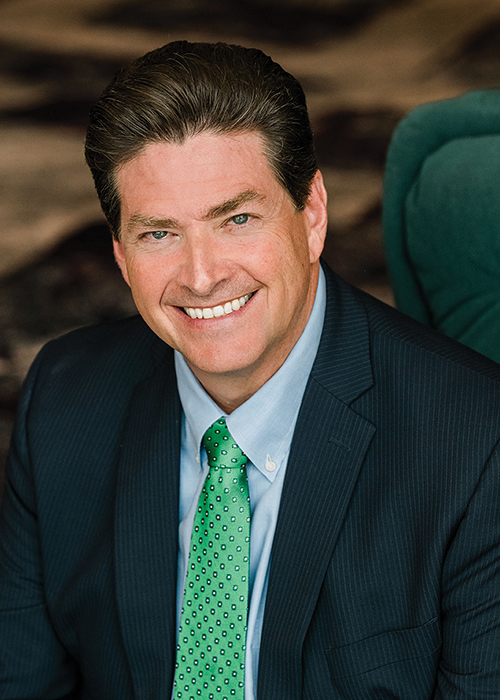Sufficient capacity and “scared underwriters”
make for a firm but manageable market
By Joseph S. Harrington, CPCU
When it comes to the construction sector, conditions are better than they were during and immediately after the pandemic of 2020, but they remain challenging.
Skilled labor is still hard to find and supply chain delays, while less acute, are still common. Perhaps it’s a good thing, or at least tolerable, that relatively high interest rates are applying the brakes to demand that contractors might not be able to meet.
In all, contractors and their insurers are finding that projects take longer to complete, increasing the length of insured exposures at a time claims costs are rising rapidly.
Jeff Benson, program manager for builders risk with the managing general agent Victor, relates how developers now need to “get in line” for skilled artisans in flooring, woodworking, and other construction specialties. Then, recounting how delays in the delivery of garage doors impeded the occupancy of an entire development, Benson says “it’s worse than it’s ever been in terms of things just not showing up.”
These factors, combined with delays in permitting, mean that projects that previously took 8-10 months to complete now take up to 14 months. “It’s taking longer to build things; it’s costing more to build things,” he says. “That changes everything” when it comes to the cost of risk, he adds.
“[C]arriers are utilizing more detailed questionnaires to understand operations, recommend appropriate coverages, and avoid high-hazard risks.”
—Teresa Cates
Construction Business Segment Director
EMC Insurance

Impact of delays
“The increased cost of labor and materials is definitely a factor when deciding how much capacity to provide and what to charge for a given risk,” says Ryan Hornbeck, executive underwriter for inland marine at Tokio Marine America. “This is particularly true in catastrophe-prone areas, as a catastrophe event increases the scarcity of labor and materials.”
Under these conditions, retail agents and brokers need to anticipate and prepare their clients for intensive scrutiny of property claims, according to Lance Malcolm, U.S. president of Contractor Connection, a subsidiary of Crawford & Co. that supports carrier claims departments with “managed repair” services provided through vetted contractors.
“Carriers are really focused on accuracy in the claims process,” he says. “They want to make sure the scope of a repair project is right, that repair-versus-replace decisions are well-founded, and that decisions are well-documented.
“Project cycle times are extending and repairs are taking longer,” Malcolm adds. “This is driven by the availability of materials, subcontractors, and labor, as well as the challenges of getting materials onsite and the complexity of claims. All types of structures have become more complex over time.”
”Underwriters are scared”
Indeed, the very process of acquiring insurance is taking more time and effort as construction underwriters employ exacting scrutiny.
“Right now, we are in a firm underwriters’ market,” says John Babson, sales executive for Propel Insurance, an Alera Group company. “Every account and every new business application gets rigorous forensic underwriting and loss control scrutiny.
“I consulted a couple of accounts this week and it was amazing to hear,” he adds. “The underwriter won’t get off first base until applicants get back to them with detailed loss control reports. The information being asked for is as detailed as I’ve ever seen in 35 or 40 years.
“Underwriters are scared, and they’re making sure they are checking the boxes, crossing their t’s, and dotting their i’s.”
Teresa Cates, construction business segment director for EMC Insurance, reports that “carriers are utilizing more detailed questionnaires to understand operations, recommend appropriate coverages, and avoid high-hazard risks.
“It’s taking longer to build things; it’s costing more to build things. That changes everything” [when it comes to the cost of risk].
—Jeff Benson
Program Manager, Builders Risk
Victor

“This seems to be a consistent trend among carriers, so agents are anticipating these requirements and responding with detailed information early in the process,” she says, adding that insurers “are adjusting guidelines, pricing, and their risk appetite to offset challenges in a continuing hard market.”
“In general, the market remains hard,” says Kristina Talkowski, Nationwide’s senior vice president and leader of mid-market commercial lines. “Pricing increases are in the high single digits, with more rate focused on umbrella, heavy casualty exposures, and auto.
“No matter the type of work a contractor does, underwriters are looking for quality customers with safety in their culture to build a balanced and resilient portfolio that can sustain the challenges of this current litigious climate,” Talkowski says.
Capacity’s there, but …
Despite persistent challenges in the sector, “there’s a lot of underwriting capacity still available,” says Russ Stein, area executive vice president for Risk Placement Services (RPS). “Pricing has gone up in the last three years or so, but there is still a lot of capacity available.
“[U]nderwriters are looking for quality customers with safety in their culture to build a balanced and resilient portfolio that can sustain the challenges of this current litigious climate.”
—Kristina Talkowski
Senior Vice President and Leader of Mid-Market Commercial Lines
Nationwide

“Except for certain pockets, like New York or South Florida, and depending on the risk, there’s a lot of competition for both excess and primary coverage,” he says.
In builders risk, Hornbeck finds carriers still eager to write risks of “superior construction” (noncombustible or better) without significant catastrophe exposure. “There seems to be ample capacity for these risks,” he says. “At the same time, there appears to be some contraction in capacity for wood-frame construction, due to the potential for large losses.”
Benson finds that “carriers are taking a hard look at convective wind areas,” with an eye to restricting their exposure.
“It used to be that we had the traditional ‘Tornado Alley’ of Texas, Kansas and Oklahoma,” he says. “Now carriers are worried about Alabama, North Carolina, Tennessee and Kentucky. We have carriers who are concerned about Minnesota. Their perception of what constitutes ‘Tornado Alley’ has grown.”
While exposure to convective storms spreads, construction demand in areas already exposed to catastrophic windstorms continues to grow. “There are simply more and more people moving into harm’s way every day,” Benson notes.
This includes affluent households seeking to build high-valued frame homes in natural areas far from fire protection services. Due to recent wildfire losses, people seeking to live on the “urban-wildland interface” are finding builders risk coverage as hard to get as homeowners insurance for those already there.
“It’s getting extremely difficult to find markets that will cover that risk,” Benson says. “Even in fire-protected areas at the edge of a city, underwriters are taking a hard look at those exposures. There’s less capacity, higher rates, and higher deductibles. It’s becoming an issue.
“The biggest challenge in property underwriting is more and more exposure in cat areas.”
“Project cycle times are extending and repairs are taking longer. … All types of structures have become more complex over time.”
—Lance Malcolm
United States President
Contractor Connection,
a subsidiary of Crawford & Co.

Risk monitoring
Talkowski finds many carriers with sizable construction books being more selective in their underwriting, and “shying away” from risks with substantial exposure for heavy construction, residential building, and auto claims.
As for builders risk insurance, she finds the market to be “very competitive,” but with more limited capacity for large frame or joisted masonry projects seeking higher limits.
“We’re starting to see widespread use of interior water damage deductibles of $100,000 to $250,000 and up depending on the size and height of the project,” she says. “Some carriers are also requesting hot work and water mitigation plans ahead of binding on larger projects, and requiring that sensors be in place to monitor for critical elements of risk.”
Along that line, Babson notes that it takes added effort today to place coverage for structural construction work along or near coastlines. “For non-coastal builders doing non-structural renovations, it’s fairly easy to put together a program,” he says. “There’s not much of an issue with capacity.
“Move a project over to the coast and you have to get participation from various reinsurers and Lloyd’s companies with separate wind deductibles and high deductibles for other perils. As for flood and earthquake coverage, it’s often very challenging to get the limits that owners or lenders want.”
Liability lines
The same pattern appears to be largely true in construction casualty lines, where underwriting capacity is ample, but producers and their clients have to work a lot harder to tap into it.
“We’re seeing some limitations on umbrellas,” Babson explains. “For example, if an insured has a $10 million umbrella, we’re often seeing it reduced to $5 million. But unlike in other hard markets, where I would not be able to find another $5 million, there’s tons of capacity to find it now.
“The increased cost of labor and materials is definitely a factor when deciding how much capacity to provide and what to charge for a given risk.”
—Ryan Hornbeck
Executive Underwriter,
Inland Marine
Tokio Marine America

“We recently replaced a $50 million umbrella with very little disruption on the layers above $20 million. We had to do some juggling to get from the $1 million general liability limit to the $20 million layer, but once we got there, it was pretty easy to complete and not much more expensive.”
William Hughes, vice president and executive officer of commercial lines for Arbella Insurance Group, agrees that carriers are being more “judicious” in providing umbrella and excess liability limits in light of mounting jury awards.
“Securing umbrella limits of
$10 million and above may be more challenging than before,” he says, “and may require more than one carrier to provide the desired limits. This can be achieved by having reinsurers and other carriers participate in layered programs, but it’s a challenge to ensure that terms and conditions are consistent among the different participants.”
“I consulted a couple of accounts this week and it was amazing to hear. The underwriter won’t get off first base until applicants get back to them with detailed loss control reports. The information being asked for is as detailed as I’ve ever seen in 35 or 40 years.”
—John Babson
Sales Executive
Propel Insurance,
an Alera Group company

“We have not run into situations where we can’t fulfill a requested limit or an excess tower,” says Stein. “We’re still seeing a lot of carriers who will provide the primary coverage and the lead excess layer to get everyone started.
“Once you have that five- or ten-million-dollar attachment point, you have plenty of people willing to come in and help complete the tower.”
Indemnification
Compounding the challenges in liability lines are unrelenting efforts by project owners and general contractors to impose burdensome indemnity and insurance requirements onto artisan contractors through provisions in work contracts.
“Contractual insurance requirements are tightening, not easing,” says Talkowski. “General contractors and large trade contractors continue to protect their interests by requiring more from subcontractors in terms of coverage limits and terms.”
“That pressure will likely intensify as the market sees the impact of higher jury verdicts and rising claim costs associated with social inflation,” notes Hughes.
Cates echoes that observation, noting that anti-indemnification statutes in many states have changed the way contracts are constructed. Previous “broad form” indemnity language is being replaced with language requiring indemnification “to the fullest extent permitted by law.”
At the other end of the project spectrum, Cates finds that many general contractors also offer project warranties to buyers as a “first line of defense” against construction defect claims. “This is becoming a must-have for home buyers,” she says. “Some states, including Florida, require at least a one-year home warranty.”
Careful consideration of contractual liability obligations is especially critical at a time when there are reports of an increasing number of subcontractors defaulting on their project commitments, according to Talkowski.
“It’s tied to labor shortages and the difficulty construction firms have finding and retaining quality workers,” she says. “It’s an issue for subcontractors who are unable to complete the work they’ve contracted for, and it’s an issue for general contractors who need to find new subcontractors and extend project timelines.”
Ryan Springer, EMC’s vice president for bonds, is seeing the same dynamic in action.
“For subcontractors, finding and retaining competent labor remains the critical issue leading to defaults,” he says. Even with relatively high interest rates slowing private construction, Cates believes public infrastructure spending will sustain high levels of demand for labor.
“There are two options for contractors regarding defaults,” he adds. “They can obtain subcontractor default insurance or secure a contract bond to protect the project owners and ensure work is completed.
“In recent years the popularity of subcontract bonds has increased,” Springer says. “Several large general contractors have been creating and utilizing specialized bond forms to support this form of risk transfer.”
A long rainy spell
Conditions in today’s construction insurance market don’t merit the overused term “perfect storm” (although storms are a big problem). They seem more like a long rainy spell that is aggravating but manageable—and with no end in sight.
The author
Joseph S. Harrington, CPCU, is an independent business writer specializing in property and casualty insurance coverages and operations. For 21 years, Joe was the communications director for the American Association of Insurance Services (AAIS), a P-C advisory organization. Prior to that, Joe worked in journalism and as a reporter and editor in financial services.






